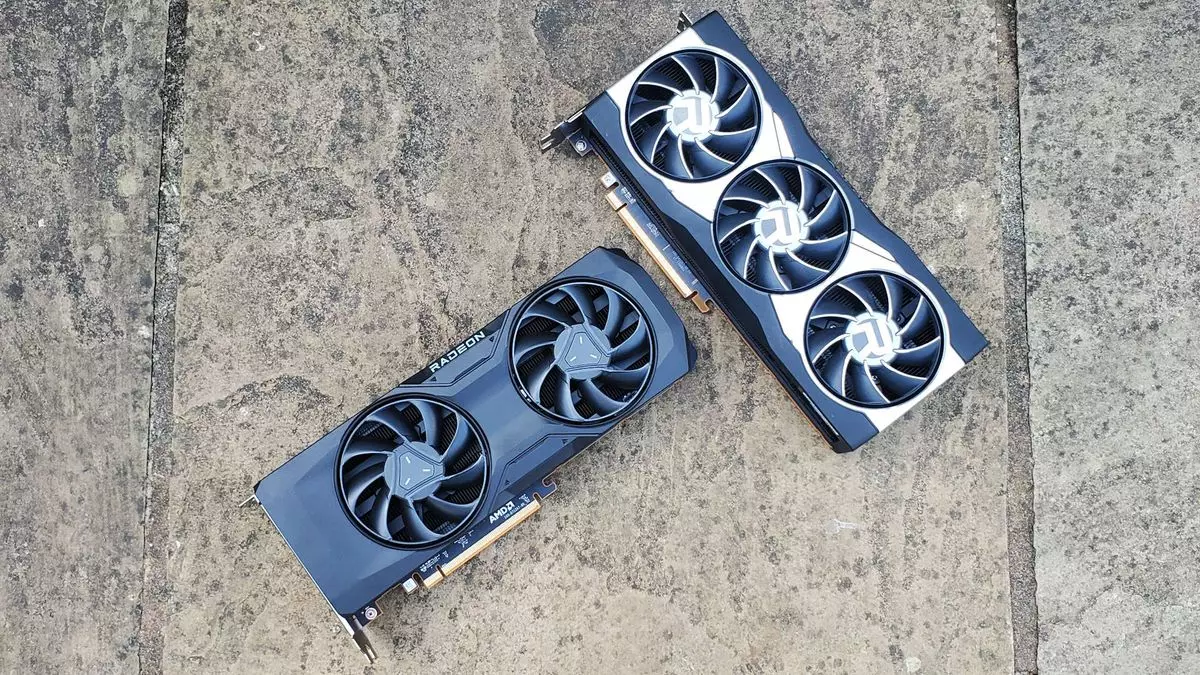In the ever-evolving landscape of technology, few subjects spark as much intrigue as the performance of graphics processing units (GPUs), particularly in gaming. Advanced Micro Devices (AMD) finds itself entangled in a multi-billion-dollar conundrum as it navigates its efforts in the gaming GPU market—a segment where it has consistently struggled despite notable successes elsewhere. With AMD’s latest earnings report revealing a significant downturn in gaming revenues, the company’s trajectory raises questions about its strategy and potential for future advancements.
AMD recently celebrated a remarkable milestone, marking record revenues of $6.8 billion in Q3. This impressive figure has been buoyed by gains in data center CPUs, GPUs, and client PC processors. Despite these successes, CEO Lisa Su was compelled to acknowledge a staggering 69% drop in gaming-related revenue, which encapsulates both PC graphics cards and custom APUs for consoles like Xbox and PlayStation. This drastic decline, translating to roughly $462 million—less than 10% of AMD’s total revenue—creates an alarming contrast against the backdrop of the company’s financial achievements, indicating a critical weakness that cannot be overlooked.
The decline in gaming revenue can, in part, be attributed to the natural cyclical decline in console sales as aging hardware begins to lose its luster. Su pointed towards the anticipation surrounding upcoming hardware releases, specifically the PS5 Pro, as a potential catalyst for recovery. However, the lack of specific figures for PC graphics cards—where the decline remains undefined—leaves a significant gap in understanding the true state of AMD’s offerings in the crucial gaming segment.
One of the more perplexing aspects of AMD’s gaming GPU situation is its strategic pivot to chiplet architecture, a move that has yielded notable success in CPU design but remains unproven in GPU applications. AMD’s initial RDNA 2 architecture included monolithic designs, which resulted in competitive performance across an array of gaming experiences. The subsequent RDNA 3 architecture, however, embraced chiplet engineering for models such as RX 7700, 7800, and 7900; this significant shift has not only fallen short of expectations but has posed a series of technical hurdles that AMD has yet to overcome.
The complexities involved in scaling chiplet designs for GPUs contrast sharply with their success in CPUs, where modularity enhances performance and cost-effectiveness. The challenges of synchronizing multiple chiplets to deliver the cohesive, high-performance output that gamers demand remain a substantial barrier. Reports suggest that AMD has recognized this misstep as it shifts gears for its RDNA 4 series, reverting to a more traditional monolithic architecture. Such adjustments hint at a lack of confidence in the original strategy, raising questions about AMD’s adaptability and foresight within a rapidly changing technological landscape.
The landscape of the GPU market is predominantly shaped by two giants: AMD and Nvidia. While Nvidia has established a strong hold on the high-end gaming sector, leveraging cutting-edge technologies like ray tracing and AI-driven features, AMD’s attempts to penetrate this market often seem misaligned. Despite possessing an innovative edge and extensive capabilities, AMD’s market share has been gradually eroded, leading to speculation about its long-term viability in the gaming GPU sector.
The absence of compelling products that resonate with gamers has exacerbated AMD’s challenges. Nvidia’s consistent push for integration of advanced features sets a high bar that AMD struggles to match. Furthermore, ongoing reports from industry analysts pointing out declining market share signal an urgent need for AMD to recalibrate its strategies.
Interestingly, while gaming GPUs languish, AMD has made considerable strides in the realm of artificial intelligence (AI). Recent reports indicate that revenues from AI GPUs for training and inferencing have surged dramatically over the past year, matching overall CPU revenues from servers and PCs. This newfound success may divert AMD’s focus, but it underscores the company’s capacity for innovation and responsiveness to market demands.
Nevertheless, the gaming GPU sector remains a critical component of AMD’s identity and reputation. As AMD gears up for the launch of RDNA 4 in early 2025, there’s an opportunity for the company to redeem itself. Leveraging the lessons learned from previous misadventures with chiplet architectures could pave the way for a revolutionary comeback in the gaming GPU market.
AMD’s foray into the gaming GPU realm encapsulates a narrative of ambition shadowed by executional shortcomings. Despite record earnings and burgeoning AI revenue, the company’s inability to gain traction in the gaming GPU market presents a stark contrast to its overall trajectory. The forthcoming RDNA 4 series could mark a pivotal moment for AMD, signifying a shift towards reclaiming its competitive edge in gaming graphics. As the industry watches closely, AMD must harness its potential and address its weaknesses if it hopes to reestablish itself as a formidable player in the gaming landscape.

